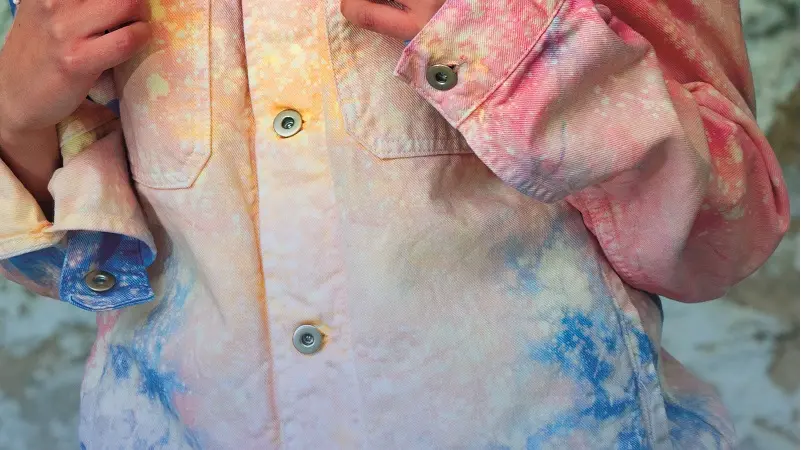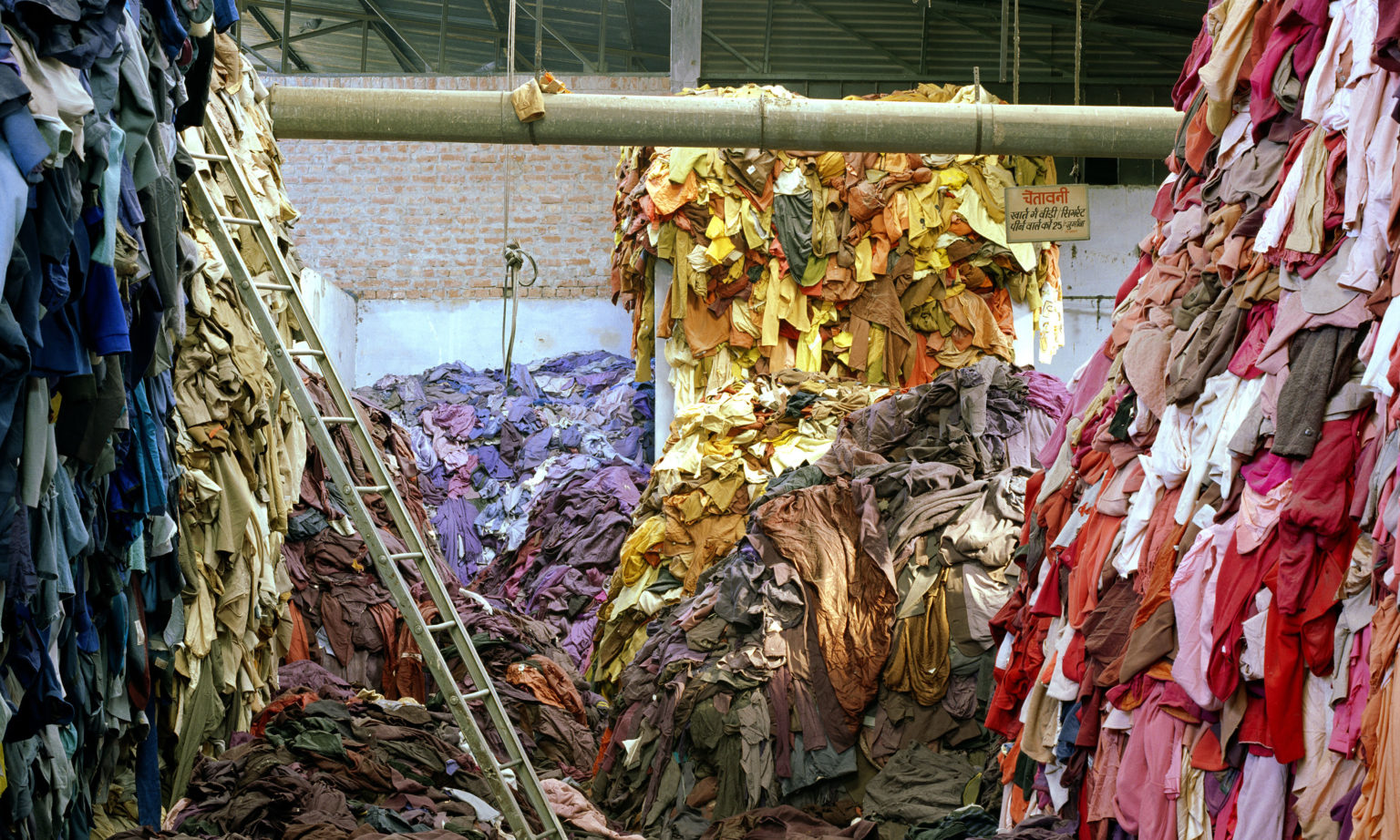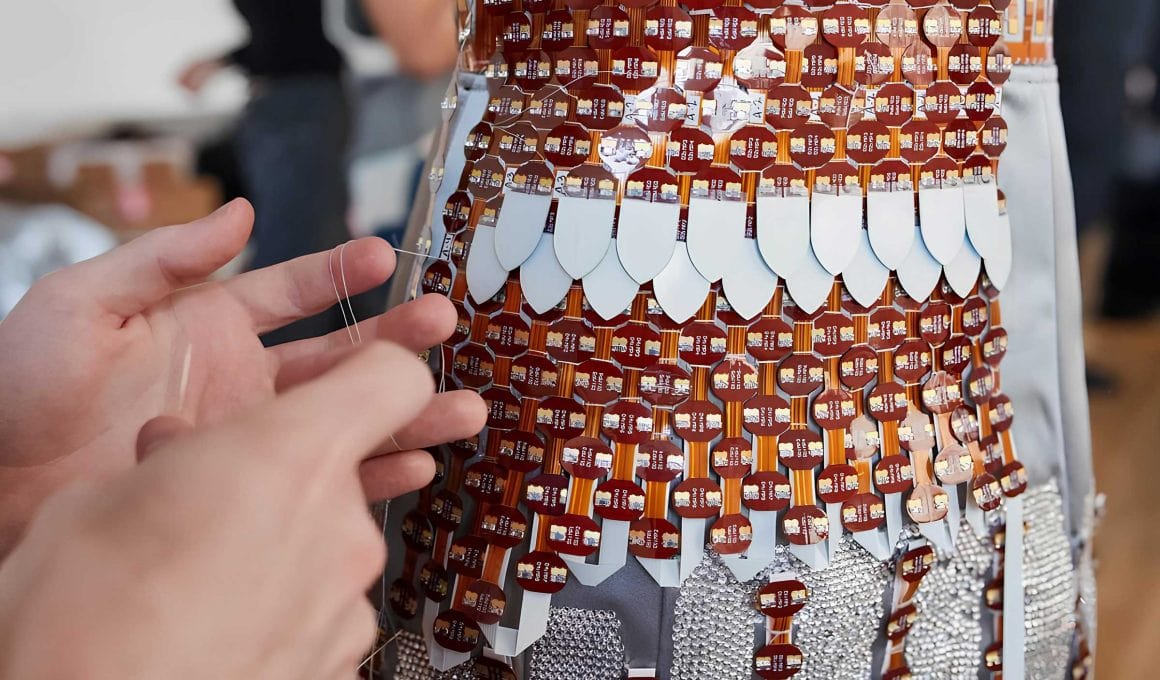
AI and digital technologies for fashion
Image courtesy of Adobe and Christian Cowans
Fashion and artificial intelligence are increasingly converging, bringing significant innovation and change to the industry. Artificial intelligence can be used to generate designs, patterns and prints, to optimize manufacturing processes to reduce material waste and make production more sustainable, to develop innovative materials that are more sustainable, durable or technologically advanced.
As early as the Adobe MAX 2023 event, Adobe unveiled Project Primrose, an interactive, animated dress that could change color and pattern. The company then collaborated with British fashion designer Christian Cowan to further develop the technology and previewed the results at New York Fashion Week 2024. The finished dress includes two parts: a top piece composed of 1264 liquid crystal petals, all laser-cut and hand-perfected, and a bottom part composed of shiny star-shaped pieces. Each petal conceals a flexible circuit board that, programmed with the help of Adobe Illustrator and After Effects, is responsible for the color changes and animations that characterize the dress and make it dynamic and interactive.
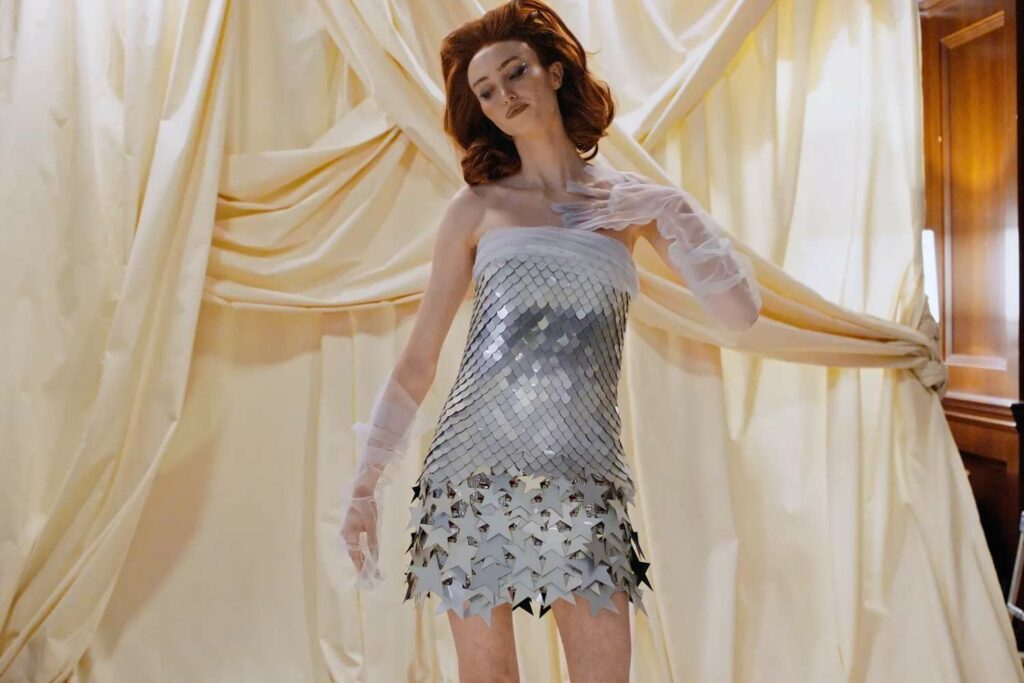
Not only in New York, the topic of the relationship and interaction between technology, materials and fashion is a major player on the runways this winter.
During London Fashion Week held Feb. 16-20, the SYKY platform unveiled two new mixed-reality projects curated by artistic director Nicola Formichetti. The first, created by Chinese designer Kay Kwok, consists of a collection of 3D printed and chrome-finished garments worn on special occasions by artists and celebrities. The use of emerging technologies gives the opportunity to create real works of art, wearable sculptures that abolish stereotypes and conventions.
The second project, on the other hand, consists of a perfect mix of tradition and innovation, technology and craftsmanship. In fact, artist Taskin Goec presented a collection of 7 patterns whose textures were generated by artificial intelligence trained and set from his previous works and styles, and finished by hand according to traditional folding, fraying and printing techniques.
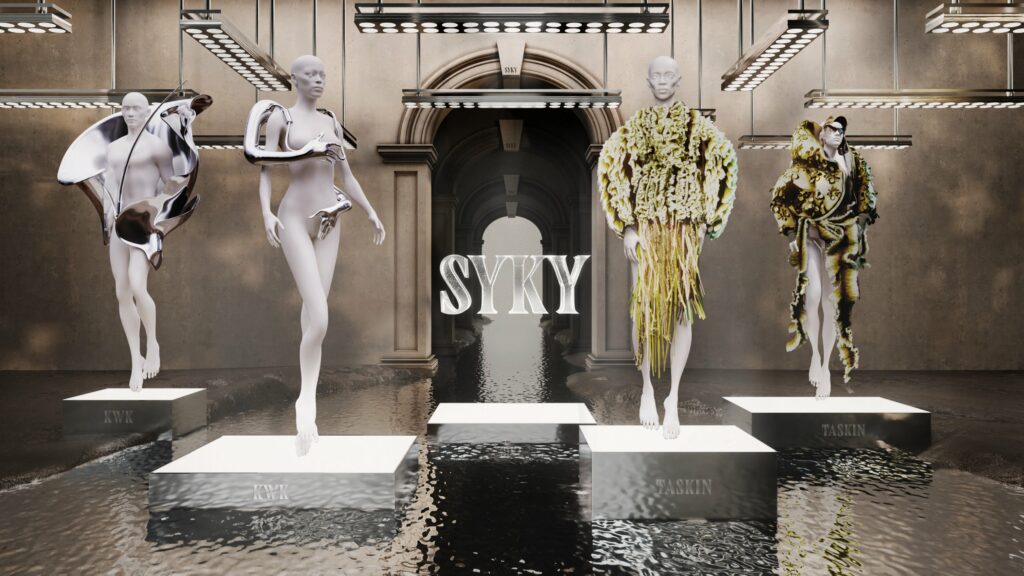
This is not the only example where technology and tradition come together. In early February, Foraeva and Stratasys unveiled the Heritage Re.Coded project. It is a collection that merges past and present, reinventing tradition and craftsmanship through advances in technology and information technology. Traditional Romanian patterns are decoded and reinvented through computational design, using tailored algorithms and then taking shape through 3D printing techniques, resulting in complex compositions and elaborate textiles. The designs are not mere decorative elements but tell deep stories, revealing hidden meanings behind each figure. What initially appear to be ornamental flowers are actually intricate compositions of tiny letters and human figures, highlighting the crucial role of digital innovation in reimagining cultural heritage.
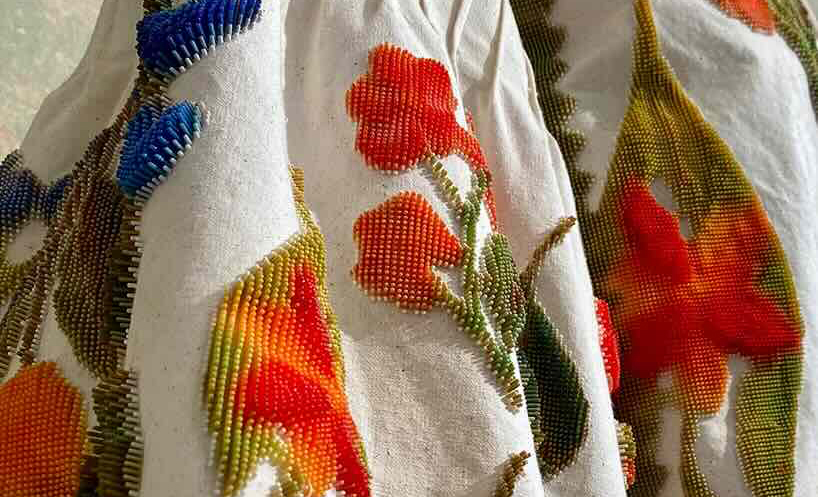
Do you want to be up-to-date on the latest trends and news about your industry?
Subscribe to Material ConneXion Materials Insights. Browse contents and reports on innovative materials in The Stacks platform, and access the Materials Library database with its 10,000+ innovative materials from manufacturers around the world. Write us.

